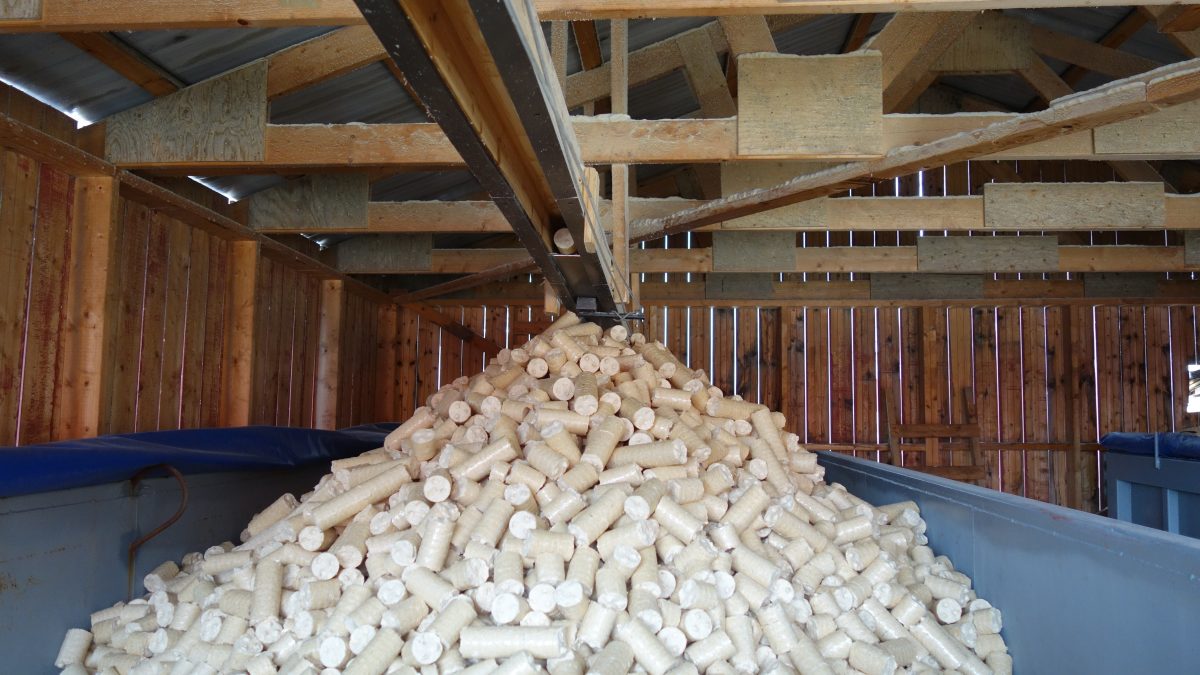Consumer wood briquettes are the ideal products for replacing traditional firewood. Since the end of the 90’s, the demand for consumer wood briquettes used for home heating systems, fireplaces and wood burning stoves have increased. Driven by the global focus on renewable energy, this demand is still growing. Compared to alternatives, briquettes are both convenient, profitable and sustainable.
With our briquetting machines, your waste will be turned into valuable renewable energy. In collaboration with our sister company RUF Briquetting System, we offer a wide range of customized solutions and a full line of consumer briquetting machines varying from low to very high capacities.
At C.F. Nielsen, we have specialized in mechanical briquetting. We offer high capacity lines ranging from 4-500 kg/hour and upwards, corresponding to wood waste of approximately 1.000 tonnes per year and more.

A mechanical briquetting press is built like an eccentric press. A constantly rotating eccentric connected to a press piston presses the raw material through a tapered die where the briquette is formed. The tapered die is connected to an extension die that keep the shape of the briquette. Large flywheels secure a very quiet and balanced operation. On a mechanical press the required counter pressure will only be adjusted by mounting a die with a different tapering angel and the length and type of the extension die. C.F. Nielsen has developed a large variety of dies for various types of wood and other biomass in order to cope with customer requirements to the quality and shape of the briquettes.
The most normal diameters for briquettes are 75 mm and 90 mm diameter. A briquetting press generates considerably higher pressure than a pellet mill and a higher temperature is generated by the 270 strokes of the piston combined with the friction through the tapered die. The process forms a natural glue and most often no additives are needed. Mechanical briquetting presses are made from capacities of 150 kg/h and upwards to 3.000 kg/h.
Briquette processing is more efficient than pelleting because the biomass does not necessarily have to be preprocessed or uniformly ground up through a hammer mill, which results in less preparation. Another advantage of briquetting is that production can be decentralized. Briquetting waste byproducts and reusing them onsite for energy rather than transporting them to another location or to a landfill can save logistical and disposal costs. Briquetting generally use less kwH per ton produced. From an investment point of view, the capex and opex costs are less for briquettes than for pellets. With respect to logistical costs pellets are more advantageous when shipping on a vessel as the bulk density is higher than briquettes, however, when shipping on a truck briquettes have the same advantage as the bulk density is sufficient to reach the maximum tonnage on a truckload.
The advantages of biomass briquetting are not limited to being used in modern industrial plants or solid fuel boilers. In developing countries, the use of briquettes is increasing to replace firewood and charcoal and by using many field or process residues deforestation and CO2 is reduced.

C.F. Nielsen is recognized as the world leading manufacturer of mechanical briquetting presses and the company continues to develop solutions to make a briquetting press the best alternative for densification of biomass. In the following we have summarized the most important advantages comparing briquettes with pellets:

Esben M. Vestergaard
Regional Sales Manager
Do you want us to contact you?
Please fill out the form and we will get back to you.